The eight best alternatives to overcrowded Paris
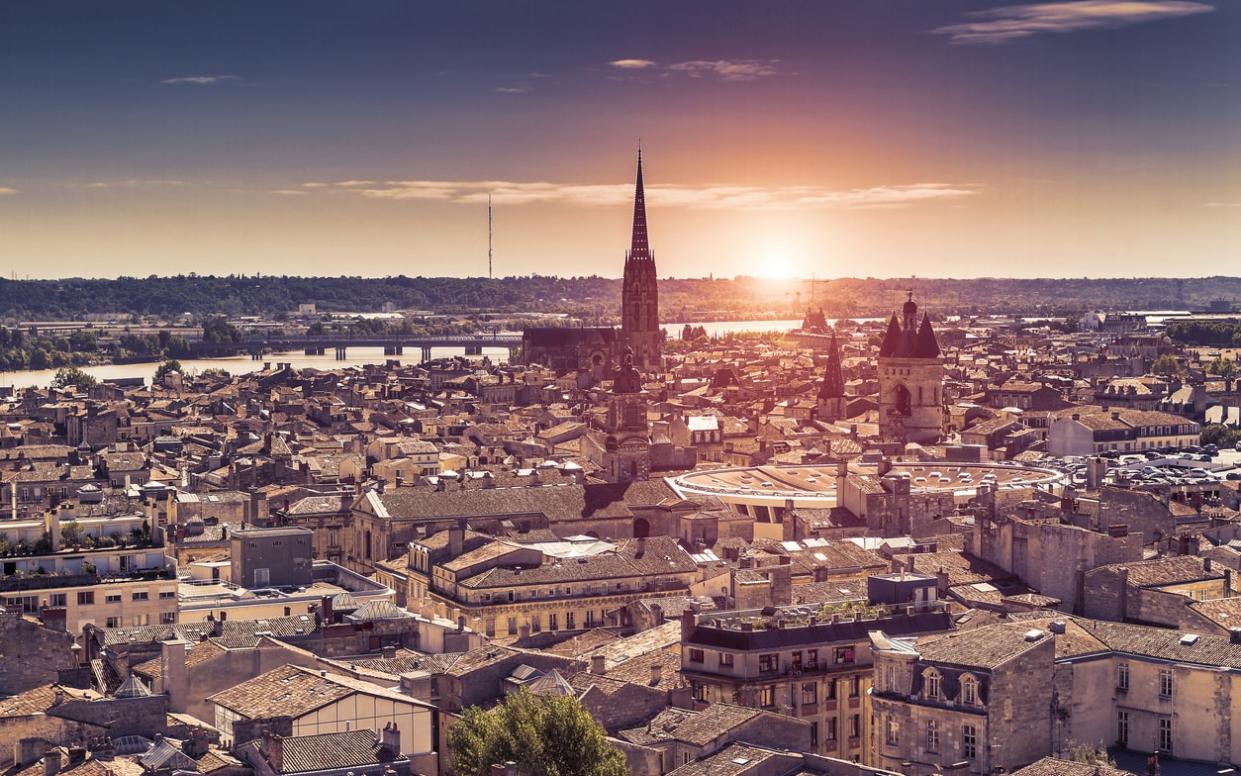
More than 93 million overseas travellers visited France in 2018. No single nation has ever welcomed more camera-wielding tourists in a single year.
It is a sure sign that France has bounced back from the horrors of the Paris and Nice terror attacks, but there is growing evidence that it is struggling to cope with the influx.
The problem is most pronounced in the capital. Last month staff at The Louvre went on strike over long queues and working conditions, with the Sud Culture Solidaires union claiming the museum is “suffocating” under the weight of tourists. Christian Mantel, head of Atout France, the organisation tasked with promoting the country to travellers, last year warned that key tourist areas along the banks of the Seine “are close to saturation”.
With annual arrivals predicted to rise to 100 million by 2020, the issue isn’t about to disappear. There are fears too of a backlash from residents, similar to those seen in other European cities. Venetians have protested against visiting cruise ships, and sightseeing buses have been attacked in Barcelona.
“For now, France hasn’t reached crisis point, but we’re close to it,” Mr Mantel said. “Above a certain number of visitors, sites will be forced to turn people away.”

Pierre-Frédéric Roulot of the Louvre Hotels Group added: “Tourism is great, but at a certain point you have to stop saying you want to attract ever greater numbers of tourists. If not, you run into a brick wall.”
So what can travellers do to help? Visiting Paris out of season would be one way to lessen the impact. The city is just as enthralling in winter, “a time for festivals and feasting on game and oysters,” according to our expert.
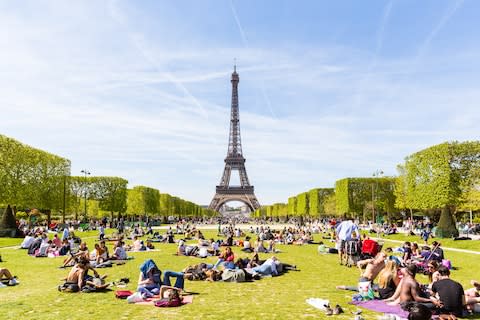
Or try somewhere else entirely. France is packed with city break options that don’t come with a liberal helping of queues and crowds. And there are plenty of other alternatives to Paris, with the same combination of art, grand architecture and fine food, beyond the country’s borders. Here’s our pick of the best.
Six options in France
Lyon
If it’s gastronomy you’re after, Paris - whose restaurants boast almost 150 Michelin stars - is tough to beat. But Lyon, with one three-star establishment, three with two stars, and 16 with one, offers a decent alternative. Eurostar has a direct service, too.
“A gourmet slant is inevitable in a weekend itinerary, with the healthy sprinkling of Michelin-starred restaurants and streets packed with the traditional Lyonnaise bouchons, their red-and-white checked tabletops groaning with dishes of offal, Quennelles de brochet and unctuous St Marcellin cheeses,” writes Telegraph Travel’s Mary Lussiana. “Culture is also high on the list, with the Musée des Confluences offering a thrilling insight into mankind’s story. It sits at the meeting point of the Rhône and Saône rivers, crowning the ambitious project to regenerate the city’s previously derelict docklands.
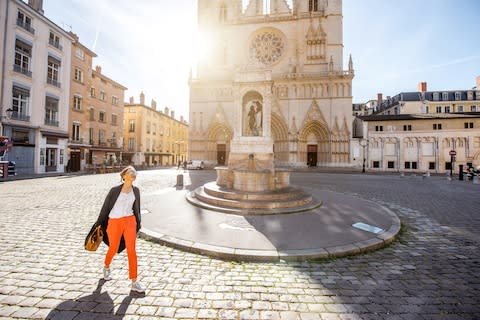
“Old Lyon, a Unesco World Heritage Site, lies between the hills of Fourvière and Croix-Rousse, its narrow streets punctuated with characteristic passageways that were used by the silk merchants to transport their products when the city echoed with the clacking of hundreds of thousands of looms. Today, though, a new chapter is in the making, with Lyon gleaming from renovations and urban remodelling.”
Montpellier
France’s most seductive city? Not Paris, says Anthony Peregrine, but Montpellier. “It is elegant, cultured and tolerant, with Mediterranean blood coursing through its veins and dynamism to spare,” he adds. “Lacking industry, the place has majored on brains and bravura. World-class architects are forever turning up to add showpieces. The trams – designed latterly by Christian Lacroix as moving tableaux – have been called the sexiest in the world. It takes a startling city to make trams sexy.

“Behind the Place de la Comédie, France’s most graceful central square, the medieval squeeze of the old town scurries with a sense of conspiracy in which everyone can join. Before rise some of the country’s more enviable contemporary developments. And, beyond them, the sea is a 50-minute cycle ride.”
What’s more, it’s even got its own Arc de Triomphe. Who needs Paris?

Lille
Paris attracts so many Britons not only for its cultural attractions, but its close proximity. Even closer to the UK, however, is Lille, the first stop on French soil for Eurostar trains.
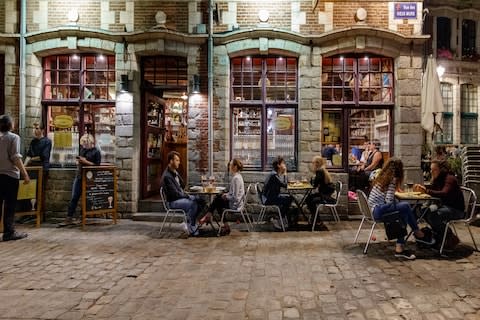
Helen Pickles writes: “The charm of this city is that, despite being the largest in northern France, it doesn’t behave like a grand French city – all icy hauteur and spike-heeled arrogance. Possibly this agreeableness is because the Lillois feel no need to impress. Who would when the heart of your city is such a pleasing cat’s cradle of streets? Paved with stone and lined with steeply gabled houses, handsome in brick and golden sandstone, its 17th- and 18th-century buildings – now elegant shops – hint at its Flemish roots. The city only became French when Louis XIV captured it in 1667.”
Bordeaux
Paris is certainly smart. But Bordeaux can match it. “The very essence of elegance,” concluded The Queen the last time she visited.
“Stroll the most graceful streets in France, eat well, drink better and then have the liveliest possible time in a city lately in touch with its Latin side,” urges Anthony Peregrine. “In the past, the place was indeed full of good taste and tradition. The centre had a grandiose 18th-century harmony unmatched in Europe. It seemed quite possible that the French Revolution never made it this far. Poor people looked rich and rich people didn’t look at all. But the city felt haughty and aloof. It had also grown shabby round the edges. No longer. Bordeaux has had the renovators in with a vengeance. Most recently, it has welcomed the riverside Cité-du-Vin, a wine centre-cum-museum-cum-gallery without equal in Europe. It dusts off the wine world, and gives it a playful sheen for the 21st century. Then again, Bordeaux was already getting up to speed, restoring noble façades, installing trams and reclaiming from dereliction the vast swathe of riverbank. There are few more graceful urban sights in France than the miroir-d'eau reflecting the splendid Palais-de-la-Bourse.”
Bordeaux is also, despite being in the south-west corner of France, less than six hours from London by train.

Strasbourg
For a watery fairytale setting, with a fraction of the crowds that can spoil the banks of the Seine, it has to be Strasbourg.
“Together with Brussels, Strasbourg has become a byword for European Union bureaucracy,” says Lee Marshall. “But there’s a lot more to the capital of France’s Alsace region than pen-pushing Eurocrats. Long a free city within the Holy Roman Empire, Strasbourg would later alternate periods of French and German rule. This has given the ancient centre of the modern city a unique cross-border appeal, with half-timbered Medieval houses straight out of the Brothers Grimm coexisting with elegant French-style mansions and townhouses. It also means that this is an easy place for visitors to fit into – beneath its veneer of Alsatian folksiness, Strasbourg is suavely international and multilingual.”
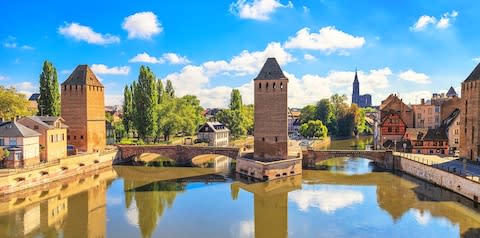
Reims
Just an hour by train from the French capital, Reims is a far more relaxing city break alternative. It is small, underappreciated – and the champagne flows like water.
“The capital of France’s Champagne region is largely known for the bottles of sparkling joie de vivre that are born in the vineyards which frame it,” says Chris Leadbeater. “But beyond that Reims is one of France’s most intriguing small urban pockets, a place of culinary flair, rich medieval history and exotic Art Deco architecture – the latter a result of the city’s reconstruction after the First World War. It is also decidedly accessible, an hour’s train ride to the north-east of Paris.”
This summer offers an extra reason to visit. The fourth stage of the 2019 Tour de France kicks off in the city, before dashing east to Nancy.
And two beyond its borders
Riga
Paris of the North? The epithet has been applied to countless European cities, including Belfast.
In 2009, travel guide publisher Frommer’s wrote that Belfast has been “transformed from a fractured city into a hot city-break destination” and was “moving fast towards its 19th century accolade of the Paris of the North”. Exactly which 19th century scribe described it as such we’re not certain, but the novelist W.M. Thackeray made no such comparisons. “They call Belfast the Irish Liverpool [a far safer bet, that],” he wrote in 1843. “If people are for calling names, it would be better to call it the Irish London at once - the chief city of the kingdom at any rate. It looks hearty, thriving and prosperous, as if it had money in its pockets and roast beef for dinner.” Or did he mean “rosbif”?
Aalborg (Denmark) and Newcastle have also been handed the title, as has Tromso (Norway), and the remote Canadian settlement of Dawson City, which earned the moniker during the Klondike Gold Rush, when its population swelled to more than 40,000 (it is now just over 1,300).
We believe the best alternative to Paris, however, is Riga.
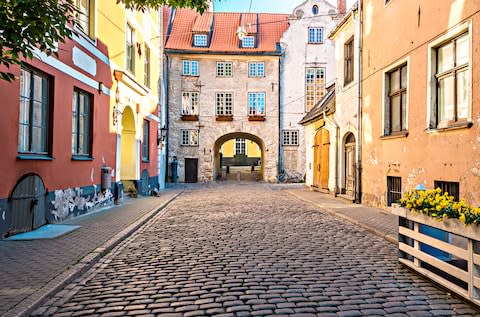
“The capital of Latvia is a symphony of spires, steeples and some of the most fantastical art nouveau architecture in the world,” says Adrian Bridge. “Young Rigans certainly know how to party, particularly in the lively bars of the magnificent Unesco-listed old town. But with its fabulous opera house, concert halls and churches offering sublime organ recitals, Riga has its highbrow side too.” There may even be snooty waiters.
For an easy escape from the city, head to the 20-mile stretch of white sand at Jurmala, a short drive or train ride away. A summer holiday favourite of Brezhnev and Khrushchev, temperatures can top 20C in high summer, so you might even need sun cream.
Beirut
What about the Paris of the East? This title may well have been foisted on every exotic city that has experienced a golden age. Istanbul, Isfahan, Jaipur, Lahore, Manila and Hanoi (another to receive comparisons with both Venice and Paris) have all been touted as Eastern alternatives.
Baku is a curious one. Beyond the wide Soviet-era boulevards, we can’t see too many similarities between the City of Light and Azerbaijan’s outlandish capital built on oil riches. We prefer the nickname we coined in a 2012 feature, “Dubai of the Caucasus”.
Pondicherry makes more sense. It really is a slice of France in India, having been a pocket-sized French colony between 1672 and 1954. “They left a legacy that reveals itself in surprising ways,” noted Mick Brown in a feature for Telegraph Travel. “The long, sweeping promenade - the Rue de la Marine - that borders the Bay of Bengal carries echoes of Deauville or Biarritz. The street signs would be at home in any French provincial town; and this is the only place in India where the police wear red képis.” Ho Chi Minh City owes its “Paris of the East” nickname to similar reasons.
Or how about Irkutsk? Sometimes called the “Paris of Siberia”, this is a city of fantastically ornate neo-classical and wooden buildings. A stopover here - it is on the route of the Trans-Siberian - also makes possible a trip to Lake Baikal, one of the oldest, deepest and largest lakes in the world. Very atmospheric, very scenic, very special.
A former “Paris of the East” - believe it or not - is Kabul. As inconceivable as it is today, war-torn Afghanistan was once an essential stop on the backpacker route (dubbed the “hippie trail” or “overland”) across Asia, and its capital was the highlight. So popular was it in 1973 that Lonely Planet’s very first guide, Across Asia on the Cheap, fretted about it becoming a “tourist trap”. Highlights included the city’s markets, parks and gardens. “Use it as a place to wander about, talk and rest in,” suggested the book’s author, Tony Wheeler.
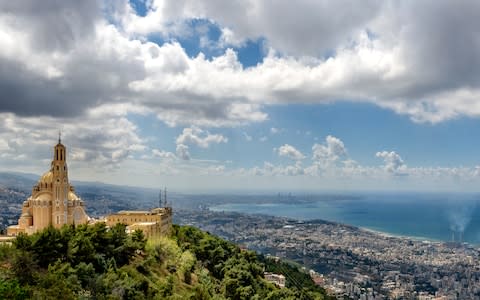
We’ll plump for Beirut. Chris Leadbeater explains: “It is perhaps fair to say that the Lebanese Civil War still dominates perceptions of Beirut. It raged between 1975 and 1990, and turned the country’s capital into a byword for death and destruction where westerners were likely to be kidnapped and held hostage. It echoed into the new millennium too – Lebanese president Rafik Hariri was assassinated by car bomb in 2005, in the year when the Syrian occupation of this little Mediterranean state finally ended. Even now, Lebanon still has its issues, and FCO advice for UK visitors is a patchwork of troubled red hotspots. But Beirut has slowly been reclaiming its image as a ‘Paris of the Middle East’ – and is a splendid option for a city break on the beach. There are excellent restaurants and luxury hotels galore – including the five-star Four Seasons Beirut.”


